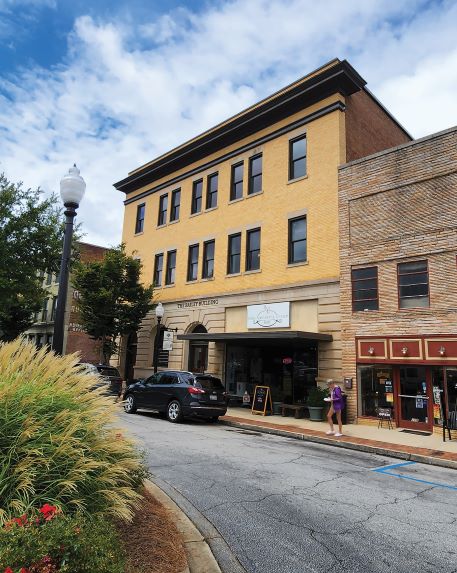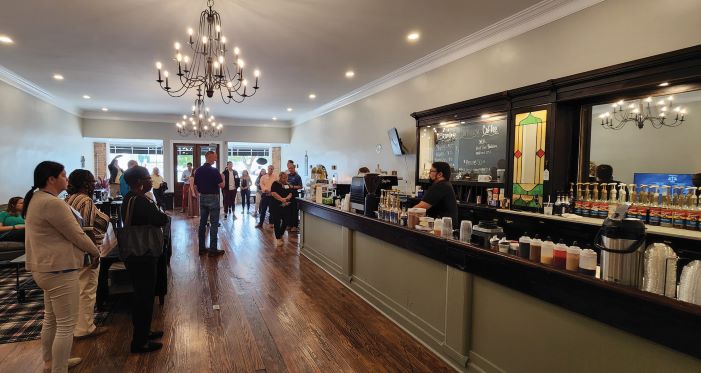The accounting firm of Love Bailey & Associates had outgrown its space in downtown Laurens, leading Gary and Apryl Bailey to hunt for a new location. They found a bank building on the historic courthouse square, a grand structure dating to 1907, but the space had an issue — its upper floors became vacant in the 1970s, and had grown dilapidated.
They purchased what is now known as the Bailey Building, intending to renovate it by using numerous revitalization tax credits.
“We are not real estate developers,” Gary Bailey said. “We went in thinking, ‘Oh, we can probably restore this for $500,000.’ Not even close.”
After construction and furnishings, the price came to about $2.5 million, but with the federal, state and Abandoned Buildings tax credits, the project succeeded, and is now a showcase of revitalization for the historic courthouse square, home to the accounting firm, an artist cooperative, and a top floor event space known as the Palmetto Room.

The Bailey Building in Laurens, which was renovated with the help of tax credits,
is now home to an artist cooperative, accounting firm and event space.
The Baileys presented the project at a Main Street South Carolina training session that took place in Laurens this August. Gary noted that they redeveloped the building “exactly as it was built,” and with Apryl overseeing the design aspects, they were even able to include light fixtures that visitors thought must have been original.
The federal historic rehabilitation tax credit can offset 20% of qualified expenses of rehabilitating a commercial building. South Carolina’s state historic tax credit can do the same thing to offset the state corporate income tax — up to 10% of the qualified expenses.
South Carolina also has the SC Abandoned Buildings Revitalization Act. It requires that the building be mostly empty and nonoperational as a business space for at least five years. It requires certain thresholds of investment and then provides a credit of 25% of actual expenses up to $500,000 per year.
Tax credits must be used within a set time frame — the Baileys reallocated the state credits to other entities before they would expire — but they can be stacked together in a way that can make expensive revitalization projects feasible.

The renovated storefront space in The Midtown Building in Laurens is
now home to Courthouse Coffee.
Also at the Main Street South Carolina training event, Barrett Holmes presented on two structures his family has contributed to the downtown renaissance, including the Midtown Building, which now houses a local coffee shop as well as office spaces.
Holmes noted that the structure from the 1880s had been kept in relatively good condition over the decades and the project preserved architectural elements like original beadboard ceilings, plaster walls, and original pine floors that were laboriously extricated from layers of vinyl. The floor showed elements like paint can rings from the building’s history as a paint store, and a worn-down foot path from the location where a counter had long stood.
“That piece of history is still there. You can’t go to Lowe’s and buy a floor like that,” he said.
The Swofford Building had not been as lucky — abandoned for 15 or more years, and with a leaky roof that caused a cascading collapse of the interior. Structural engineers declared it beyond repair.
Holmes’ consultations, however, showed that hope for the building remained, although its time had run short when it was purchased. After heavy rainfalls, he had observed water pouring into the building.
“I was watching big sections of heavy brickwork move. They were moving inches. I said, we’ve got to get this going now or we’re going to lose the backside of this building,” he said.
The rebuilding of the space was nearly complete with Main Street training participants toured it. Offices now fill the second floor while the storefront will house The Tailored Oak, a steak restaurant.
“It will bring new life to the area,” Holmes said.
More information on tax credits can be found in the Main Street South Carolina Economic Incentives Toolkit and tax credit video.
